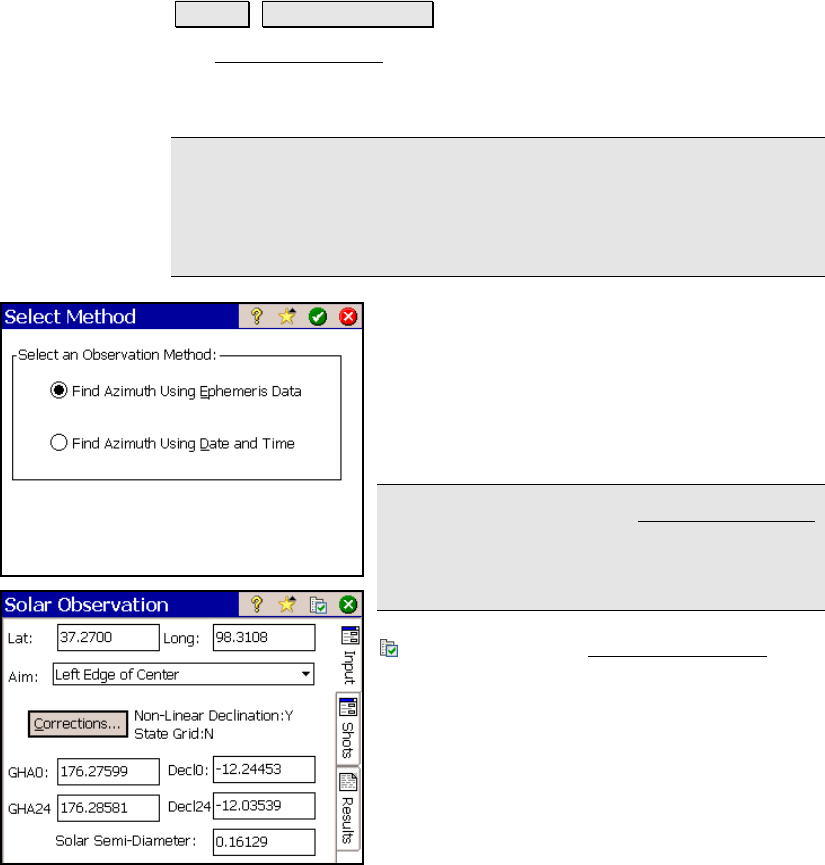Reference Manual
Table Of Contents
- Table of Contents
- Welcome
- Main Menu
- File Menu
- Job Menu
- Job Menu – GPS
- Job Menu – Basic GPS
- Survey Menu
- Backsight Setup
- Traverse / Sideshot
- Repetition Shots
- Multiple Sideshots
- Radial Sideshots
- Distance Offset Shot
- Horizontal Angle Offset
- Vertical Angle Offset
- Auto Collect
- Corner & 2 Lines
- Corner & Angle
- Corner & Offset
- Corner & Plane
- Surface Scan
- Video Scan
- Shoot From Two Ends
- Record Mode
- Resection
- Remote Elevation
- Check Point
- Solar Observation
- Remote Control
- Survey Menu – GPS
- Survey Menu – Basic GPS
- Leveling Menu
- Stakeout Menu
- Stakeout Menu – GPS and Basic GPS
- Inverse Menu
- Cogo Menu
- Curve Menu
- Roads Menu
- Adjust Menu
- Miscelaneous Screens
- Appendix A
- Index

Survey Menu – Conventional Mode
R-161
Solar Observation
Survey Solar Observation.
The Solar Observation screen is used to compute the azimuth to an
arbitrary backsight based on the position of a celestial body; typically
the sun.
WARNING! Direct viewing of the sun without a proper
filter will cause serious eye damage. Pointing a total station
directly toward the sun without a solar filter can also damage the
EDM components.
Find Azimuth Using Ephemeris Data: select
this method if you plan to enter data from an
ephemeris.
Find Azimuth Using Date and Time: select
this method if you do not plan to use an
ephemeris.
Note: The fields within the Solar Observations
screen will vary depending on the method
selected above. All of the fields from each
method are described below.
: is a shortcut to the Date/Time Settings
screen (Page R-57).
Lat. / Long.: is the latit
ude and longitude of the
total station. These values can be scaled from a
map, such as a U.S.G.S. 7.5-minute quadrangle
sheet or collected with a handheld GPS unit.
Aim: selects the portion of the celestial body
that where you intend to aim. You can select
Left Edge of Center, Center, or Right Edge of










